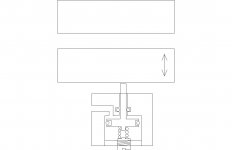imachine909
Cast Iron
- Joined
- May 17, 2010
- Location
- South East
Looking for some ideas how to clamps some parts quickly. Currently use lots of vises. Parts range in length from 2 feet to 12 feet long. Below is a picture of the side view of the part and sizes and another of the part in the current vise jaws we use. Thinking maybe some hydraulic vises or cylinders with some jaws on them. Any suggestions?


